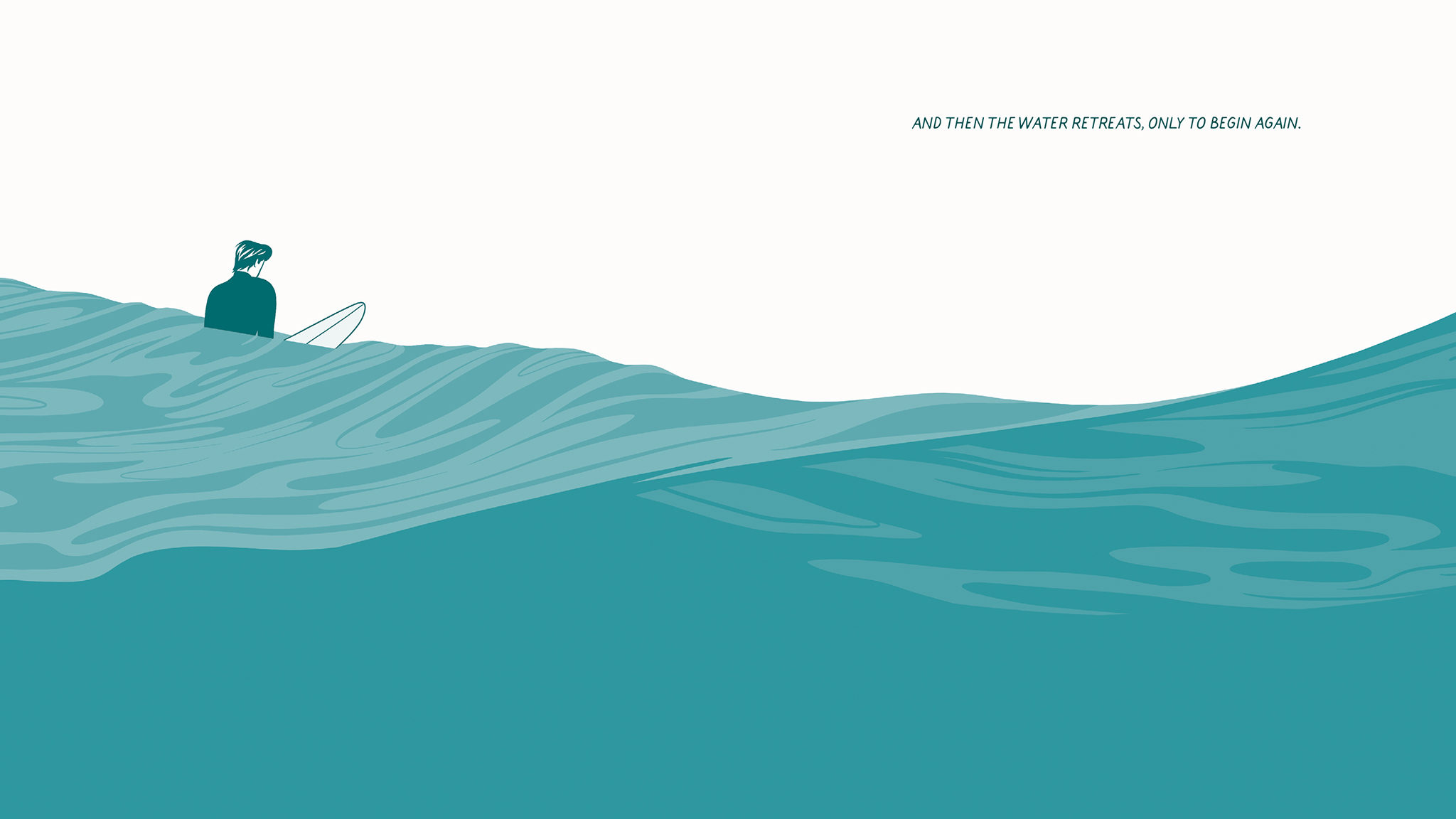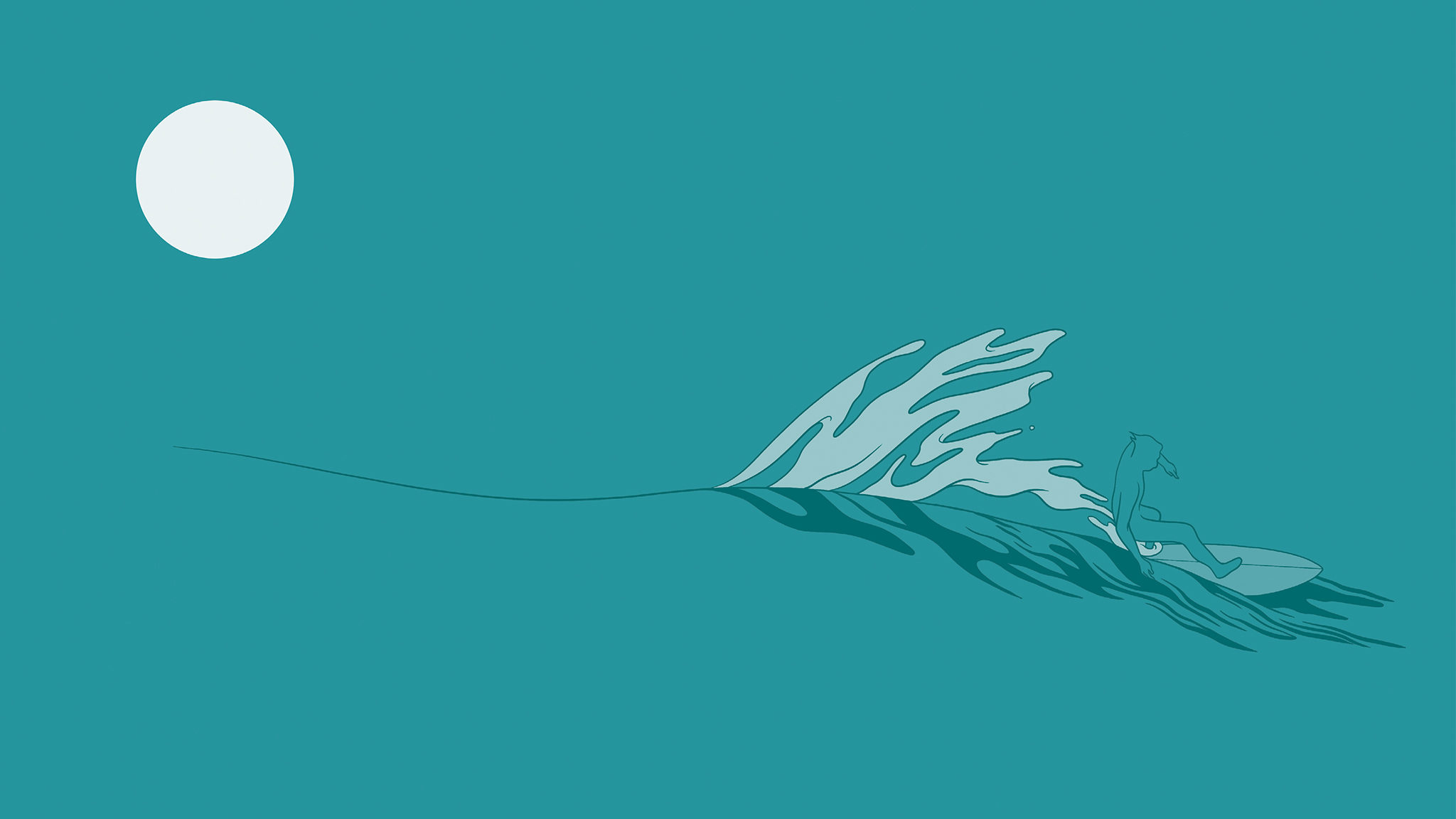Released earlier this year to widespread acclaim, In Waves by AJ Dungo is a rare work of non-fiction that is as moving as it is fascinating. A dual narrative, AJ weaves together a history of the great heroes of surfing with the deeply personal story of his relationship with his late partner Kristen, and her prolonged battle with cancer.
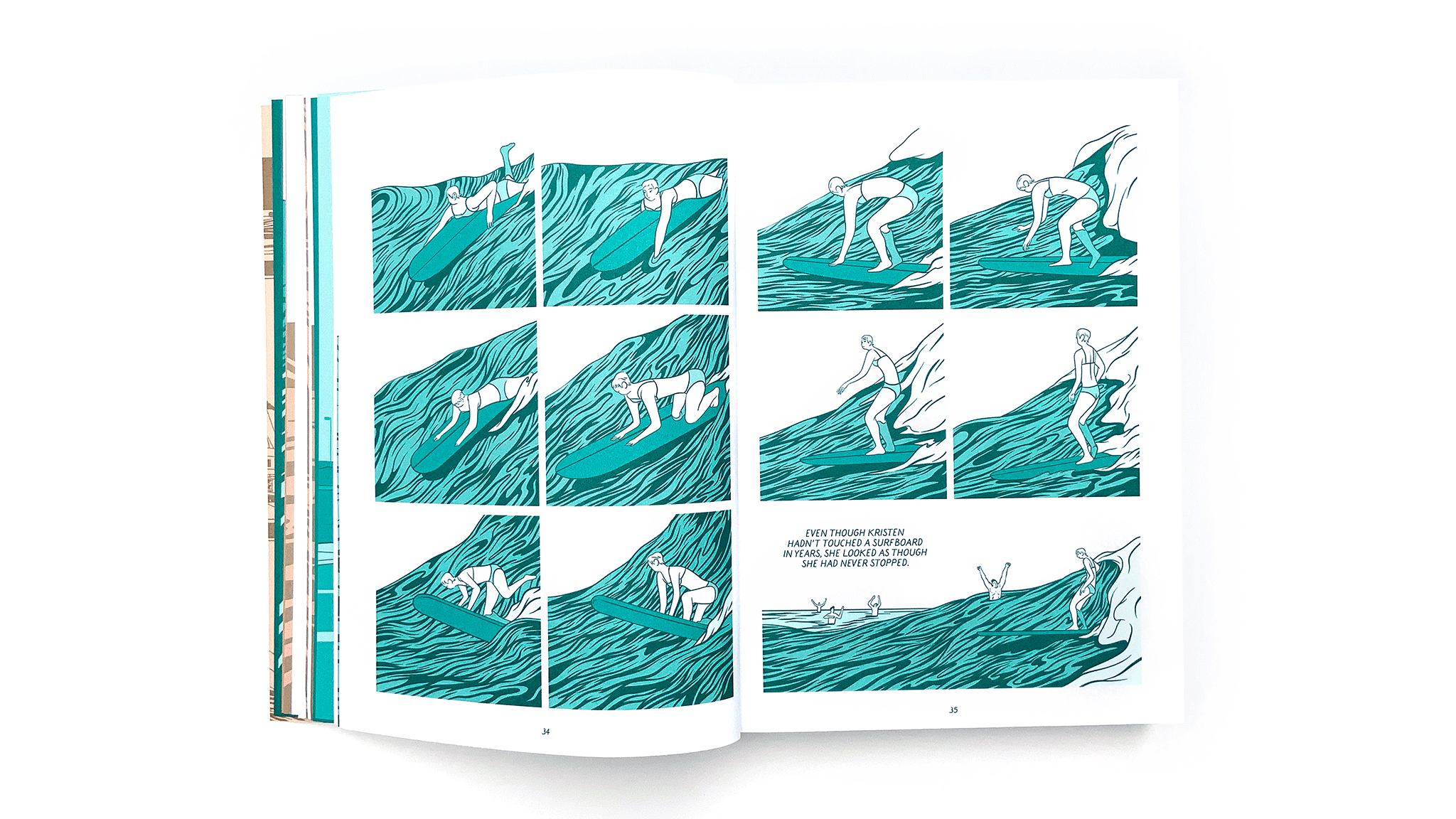
We sat down and talked to AJ about the years he spent working on In Waves, and to get an insight into his working process.
How did you first decide you wanted to become an illustrator?
When I was in community college, I didn’t know what I wanted to do. I was just taking general courses. The only class I was taking that I really enjoyed was a printmaking class. During this time I stumbled across a book on illustrators that Juxtapoz published. I was just so enamored. I learned that it was a broad genre that covered all of the kinds of images that I really gravitated to.
The artist that really stood out to me from that book was James Jean. I started collecting his books and just fell deeper into this new genre I never knew had a name. His book of Fables covers was a revelation. It was so revelatory to me because he included process shots alongside finished pieces. My mind was blown that these intricate images started as scribbles. I dove deeper into his catalog and saw all the work he had for all kinds of clients. Because of him, I started to read more about illustration as a profession, and that’s when I decided that I wanted to become an illustrator.
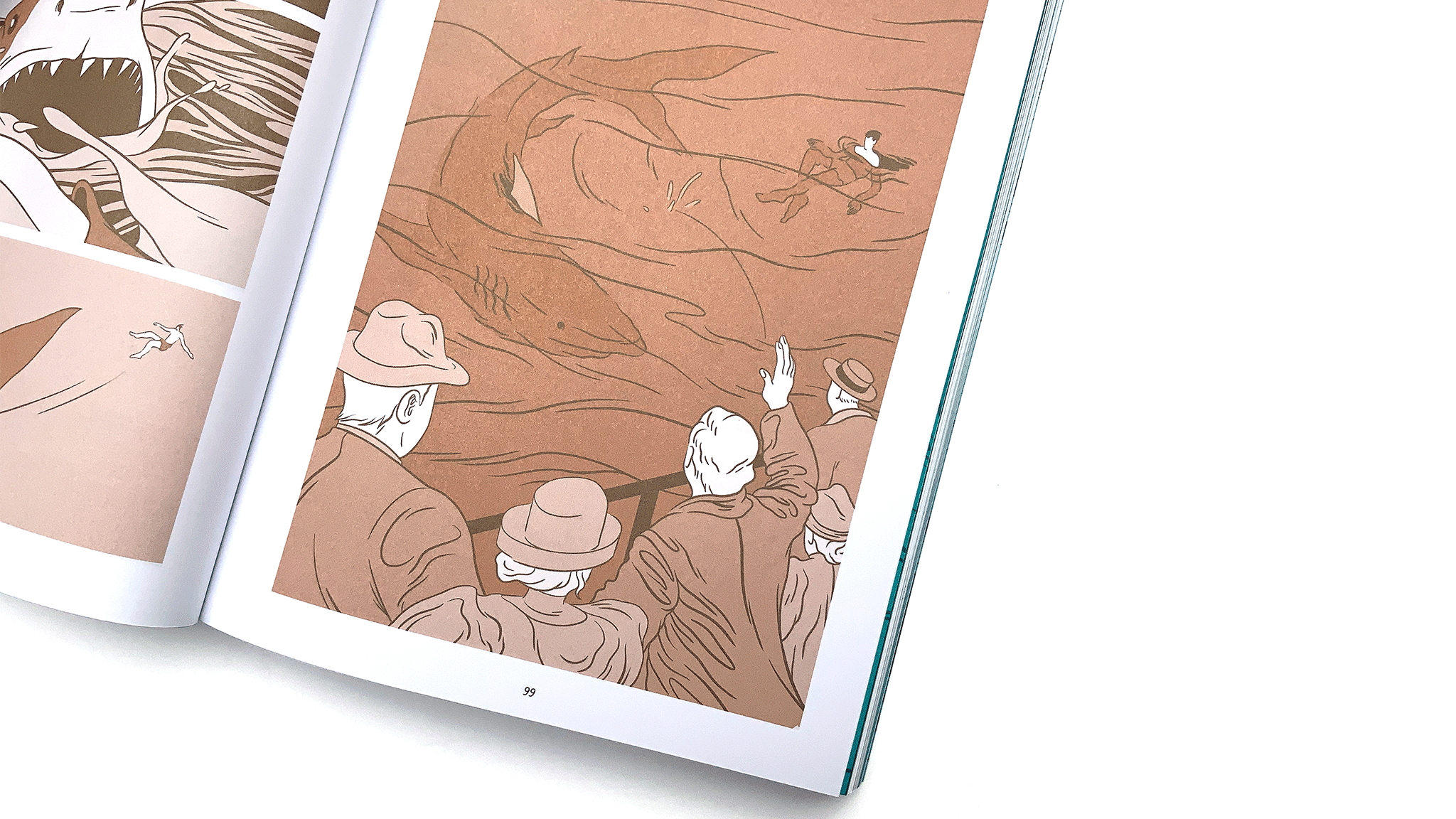
In Waves is incredibly visually distinct, with the beautiful limited colour palette and the switch between the browns and oranges of the history of surfing, and the greens and blues of the autobiographical sections. At what point did you decide to format the book this way, both with the colour palettes and merged narratives?
Thank you for the kind words. The merged narrative had been an aspect of the book since it’s inception. It was the prompt that Sam, the CEO of Nobrow, gave me when we started this project together. On a study abroad trip with my school, I presented Nobrow with a project about surfing. When Sam approached me to make a book together, he referenced my surfing project and wanted to make a book about the history of surfing. Eventually he wanted a story with a more personal connection. So I told him about Kristen and how she introduced me to the sport.
That’s when he suggested I try and merge the two; the history of surfing alongside my personal history with surfing. A request that I thought was ridiculous at first because it seemed impossible but one that I’m so grateful for today.
In regards to the color, I had always known the book would be a limited palette due to the tight deadline. It was the practical choice since I had so little time to work on the book. Sam later insisted I add another color, some sort of spot color. That’s when I decided to use the color as a system of placing the reader in a certain narrative. This choice both fulfilled Sam’s request and added a layer of subtle organization to the storytelling.
How much does the final version of In Waves differ from your initial idea?
Not much. The only thing that I wanted that changed was the beginning of the book. In my mind I knew how the story would start and how the story would end and that was with the chapters “the kiss” and with “bushwick request.” I thought it was a powerful way to drop the reader into the thick of the story without much explanation. But a fantastic editor at Nobrow, Ayoola, suggested swapping the beginning out with the chapter that opens the story now, “last summer.” It made more sense, it brought all the elements of the book to the reader in a subtle way; Kristen, her illness, and our connection to surfing. In the end, I think it worked out for the best. Thanks Ayoola!
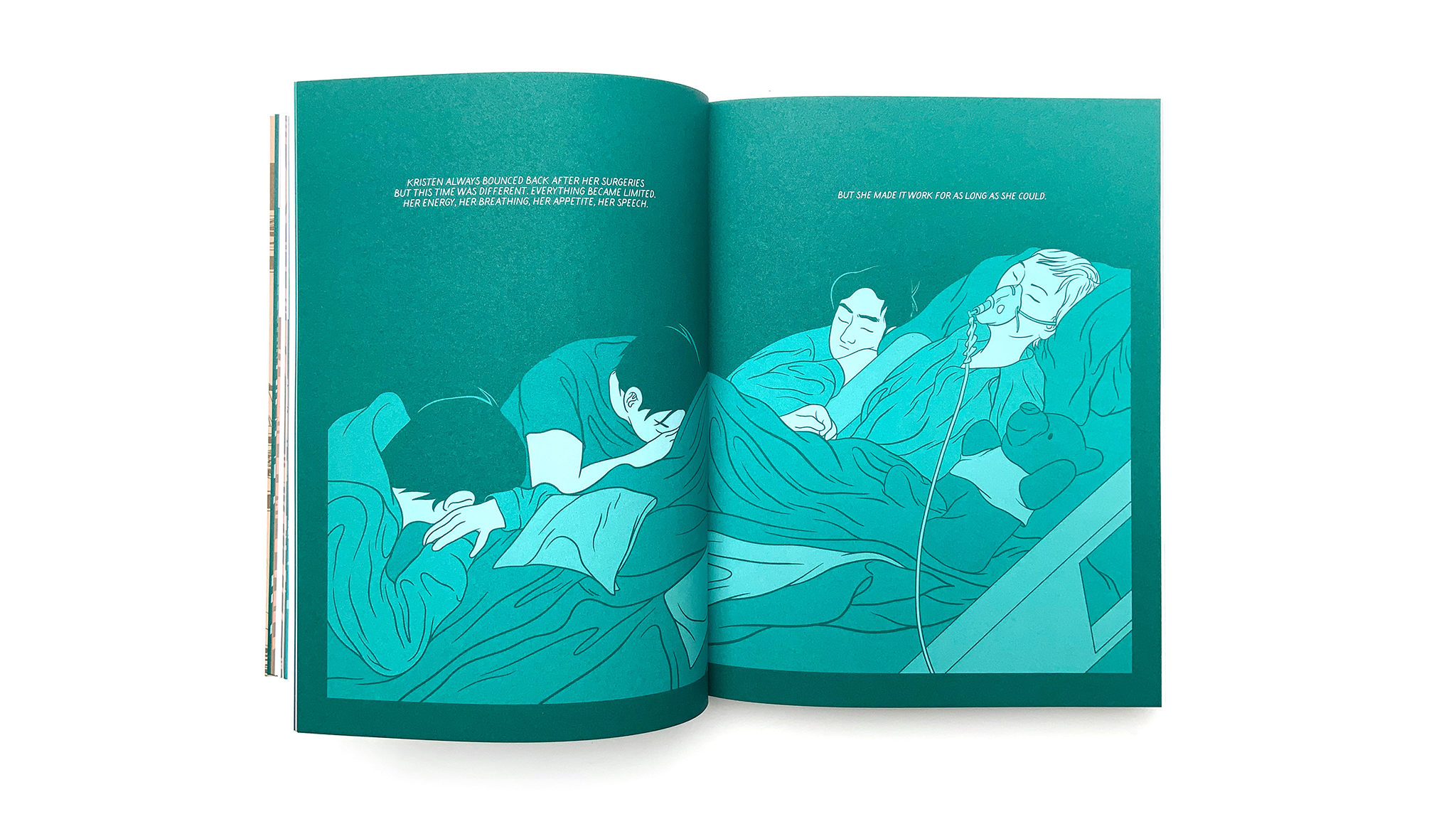
This book is clearly a complete labour of love, was it difficult to work on such personal subject matter so intensely?
When Sam asked me to make a book with him and Nobrow, it had only been 3 or four months since Kristen had passed away. It was very intense. I didn’t think I could do it. I didn’t think the timing was right. I had just started a full time job, I was doing freelance illustration on the side, and now I had to tell Kristen’s life story and the history of surfing within a few years. It was a Herculean task. Not only was it difficult emotionally but I think logistically it was pretty hard. I would work from 9 to 5 then stay at the office until 10 or 11 pm working on the book. My commute was over an hour long and there were many nights I fell asleep on the ride home. Also every weekend was spent working on the book. I became notorious for cancelling plans and being absent from events because I had to work on this book that meant so much to me. As hard as it was, it was worth it. It was a unique way for me to process my grief, I think the self induced isolation was good. This project allowed me to immortalize my best friend.
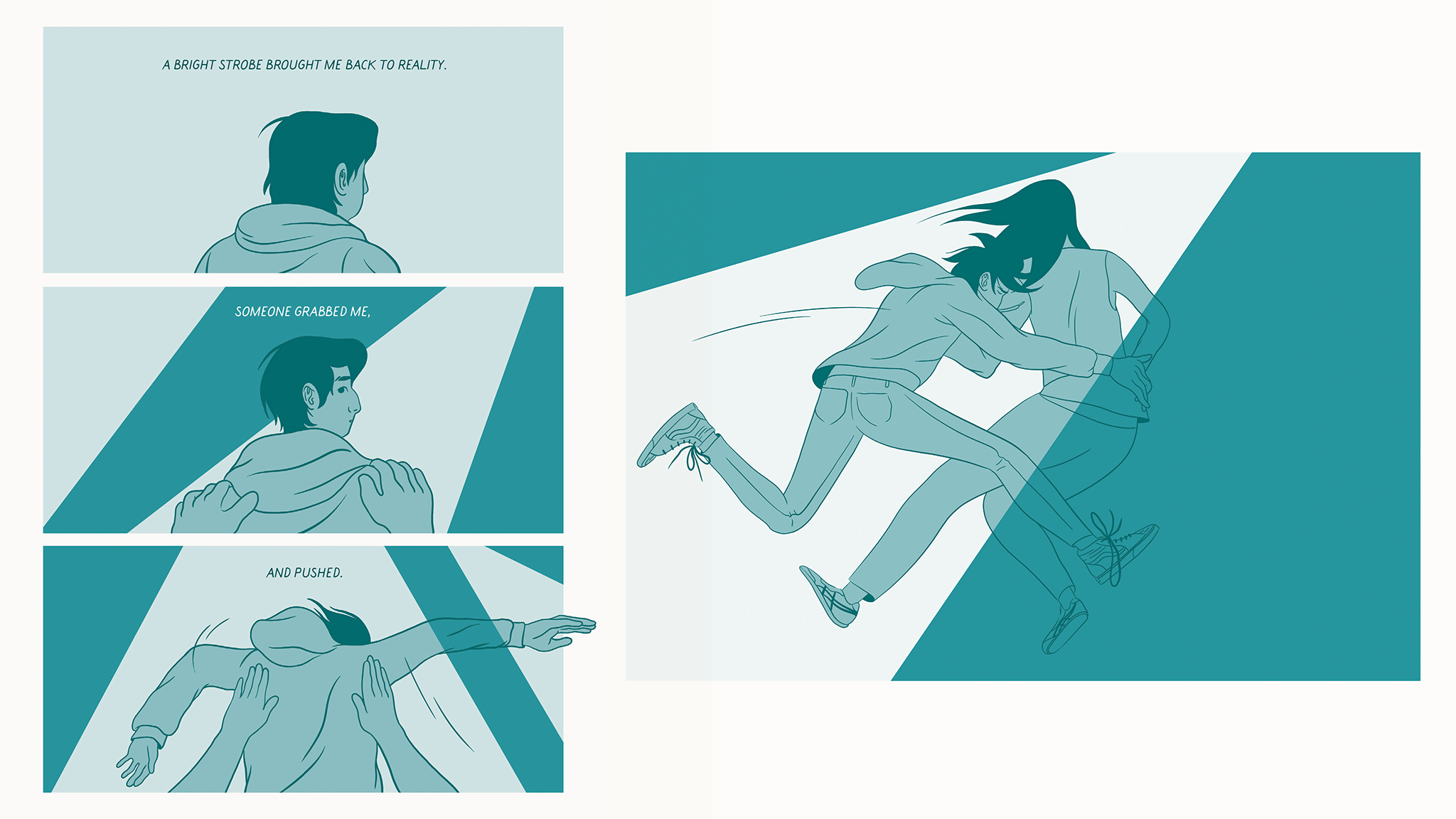
All of Kristen’s family and friends have clearly been amazingly supportive about the book’s publication, were they very involved in the making of the book?
Yes, they are incredible and I consider them my own family. Initially, they weren’t involved. I was so secretive about the whole project the entire time I was making it. I never showed anyone anything, it was important to me that everyone read the book in it’s finished state to absorb the story in its entirety, which I think is the only way it makes sense. After submitting a draft to Sam, he thought the chapter where I met Kristen for the first time was too clichè and would benefit from an outsider’s perspective. Which I thought was weird because it was exactly as I recalled. I had wanted to include Kristen’s family in some way and this was the perfect opportunity.
With a voice recorder ready, I interviewed Kristen’s mom, brother, and cousin. It was during the interview of Kristen’s cousin that his wife recounted a story that Kristen had shared with her. It was about how I met Kristen and it was told in a way that I had completely forgotten about. It was much less cliché and much more humiliating haha. I must have buried that one deep in my subconscious. It was so great having their input because it gave the story more depth and dimension. I love that their voices are a part of Kristen’s story because I’m just one aspect of her life. To have them included gives the reader insight into the depth of the love Kristen’s family had for her.
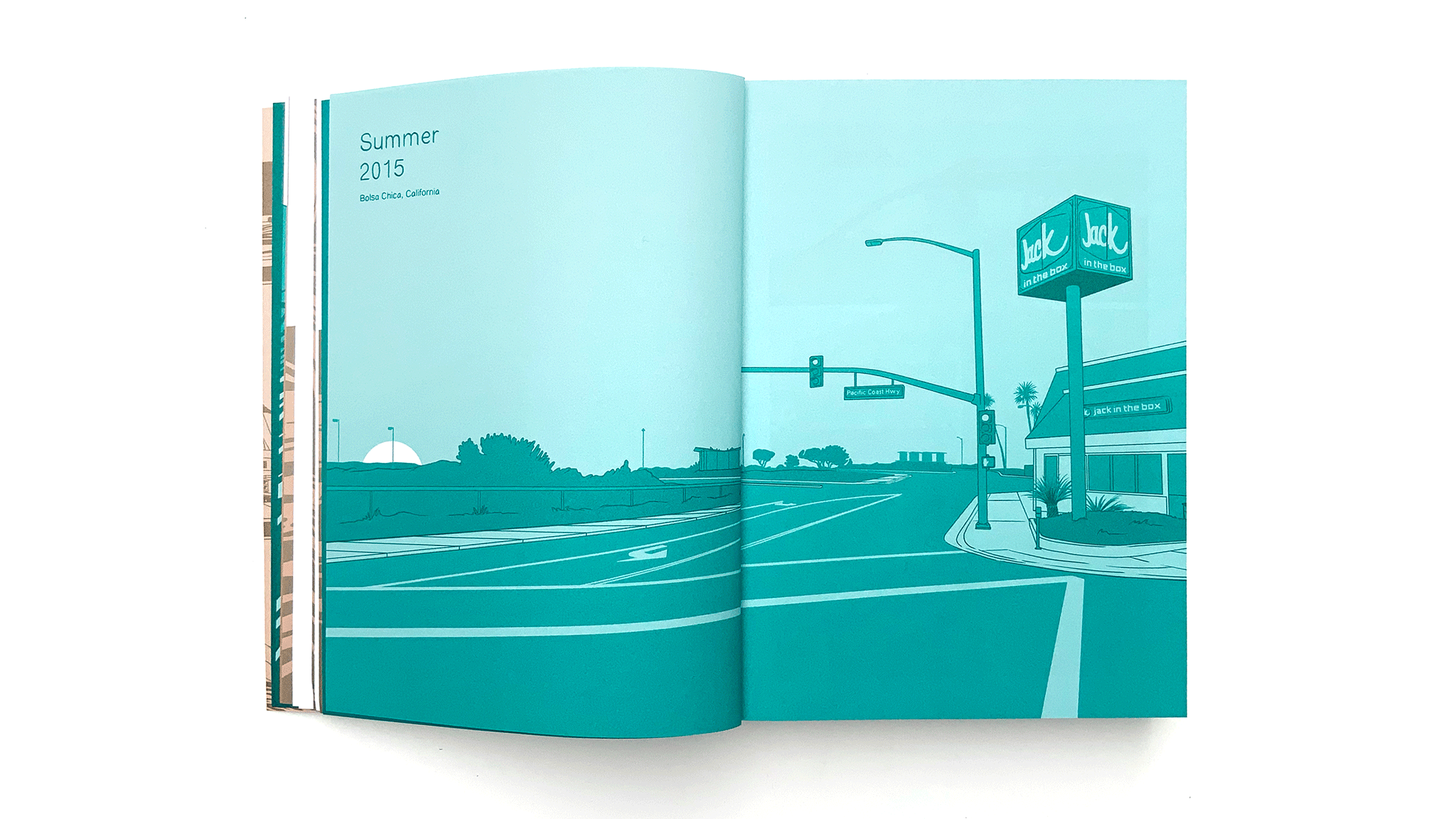
Are there any artists or illustrators who have influenced you and your work the most?
This question is always so hard to answer. There were artists that I had in heavy rotation during the writing of the book. Adrian Tomine, Jillian Tamaki, Craig Thompson, David Mazzucchelli, Connor Willumsen, Sam Alden, Chris Ware, Daniel Clowes, Olivier Schrauwen, Alison Bechdel, Katsuhiro Otomo, Yoshihiro Tatsumi. The author William Finnegan’s book “Barbarian Days” was a huge inspiration, he writes about surfing in such an intimate and transcendent way.
Are you working on any other long-term projects at the moment, or do you have anything in mind for the future?
Right now I’m just doing freelance illustration and weirdly enough I’m working part time assisting James Jean. In terms of long term projects, I’d love to make another book but I think I need to live a little before I start another one. It’s definitely always in the back of my mind though.
And very importantly, do you still get the chance to surf much?
I try to get out as often as I can. If anyone wants to paddle, hit me up!
AJ is based in Los Angeles, and In Waves is his debut graphic novel.
Copies are available from our site, or in your local best bookshop. American customers can also purchase In Waves from the Penguin Random House site.
